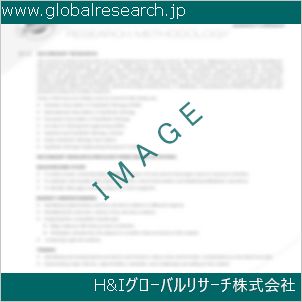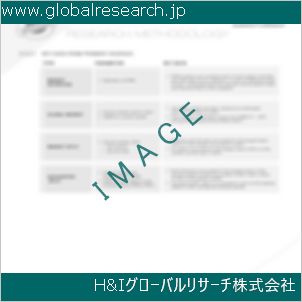1. Preface
1.1. Objectives of the Study
1.2. Market Segmentation & Coverage
1.3. Years Considered for the Study
1.4. Currency & Pricing
1.5. Language
1.6. Limitations
1.7. Assumptions
1.8. Stakeholders
2. Research Methodology
2.1. Define: Research Objective
2.2. Determine: Research Design
2.3. Prepare: Research Instrument
2.4. Collect: Data Source
2.5. Analyze: Data Interpretation
2.6. Formulate: Data Verification
2.7. Publish: Research Report
2.8. Repeat: Report Update
3. Executive Summary
4. Market Overview
4.1. Introduction
4.2. Marine Sensors Market, by Region
5. Market Insights
5.1. Market Dynamics
5.1.1. Drivers
5.1.1.1. Growing concern about marine ecosystems and monitoring of water quality and pollution
5.1.1.2. Expanding marine transportation and emphasis on ship safety and navigation
5.1.1.3. Utilization of marine sensors for naval surveillance in the defense & military sector
5.1.2. Restraints
5.1.2.1. Incidences of product recall and issues associated with frequent calibration and maintenance
5.1.3. Opportunities
5.1.3.1. Advancements in the design and models of marine sensors
5.1.3.2. Emerging focus on remote sensing with autonomous underwater vehicles
5.1.4. Challenges
5.1.4.1. Complex installations of marine sensors and limitations related to their inaccuracy
5.2. Market Segmentation Analysis
5.2.1. Sensor Type: Adoption of acoustic sensors in oceanographic and environmental studies
5.2.2. Connectivity: Expanding usage of wireless connectivity to facilitate ease of operation
5.2.3. Application: Necessitating deployment of marine sensors for in-marine environment monitoring and controlling
5.2.4. Deployment: Equipping ongoing marine and climate research initiatives through the surface deployment of marine sensors
5.2.5. Sales Channel: Continuous technological advancements and quality assurance in OEM marine sensors
5.2.6. End-Use: Introduction of sensors that emphasize real-time data and autonomous capabilities for the commercial sector
5.3. Market Trend Analysis
5.3.1. Increasing investments to enhance the sensor technology and growing port expansion in the South Americas surge the demand for marine sensors in the Americas region
5.3.2. Escalating the need for marine sensors in the APAC region is a response to increasing marine trade activities
5.3.3. Presence of established players offering advanced marine sensors, backed by the enhanced demand for ocean research and energy sectors in EMEA
5.4. Cumulative Impact of High Inflation
5.5. Porter’s Five Forces Analysis
5.5.1. Threat of New Entrants
5.5.2. Threat of Substitutes
5.5.3. Bargaining Power of Customers
5.5.4. Bargaining Power of Suppliers
5.5.5. Industry Rivalry
5.6. Value Chain & Critical Path Analysis
5.7. Regulatory Framework
6. Marine Sensors Market, by Sensor Type
6.1. Introduction
6.2. Acoustic Sensors
6.3. Force & Torque Sensors
6.4. Level & Flow Sensors
6.5. Motion Sensors
6.6. Optical Sensors
6.7. Position & Displacement Sensors
6.8. Pressure Sensors
6.9. Proximity Sensors
6.10. Radar Sensors
6.11. Smoke Detection Sensors
6.12. Speed Sensors
6.13. Temperature Sensors
7. Marine Sensors Market, by Connectivity
7.1. Introduction
7.2. Wired Sensors
7.3. Wireless Sensors
8. Marine Sensors Market, by Application
8.1. Introduction
8.2. Ballast & Bilge System
8.3. Firefighting System
8.4. Fuel & Propulsion System
8.5. HVAC System
8.6. Navigation & Positioning System
8.7. Refrigeration System
9. Marine Sensors Market, by Deployment
9.1. Introduction
9.2. Subsea
9.3. Surface
10. Marine Sensors Market, by Sales Channel
10.1. Introduction
10.2. Aftermarket
10.3. Original Equipment Manufacturer
11. Marine Sensors Market, by End-Use
11.1. Introduction
11.2. Commercial
11.3.1. Bulk Carriers
11.3.2. Container Vessels
11.3.3. Cruise Ships
11.3.4. Dry Cargo Vessels
11.3.5. Passenger Ferries & Yachts
11.3.6. Tankers
11.3. Defense
11.4.1. Aircraft Carriers
11.4.2. Amphibious Ships
11.4.3. Offshore Support Vessels
11.4.4. Submarines
11.4. Unmanned Underwater Vehicle
11.5.1. Autonomous Unmanned Vehicle
11.5.2. Remotely Operated Vehicle
12. Americas Marine Sensors Market
12.1. Introduction
12.2. Argentina
12.3. Brazil
12.4. Canada
12.5. Mexico
12.6. United States
13. Asia-Pacific Marine Sensors Market
13.1. Introduction
13.2. Australia
13.3. China
13.4. India
13.5. Indonesia
13.6. Japan
13.7. Malaysia
13.8. Philippines
13.9. Singapore
13.10. South Korea
13.11. Taiwan
13.12. Thailand
13.13. Vietnam
14. Europe, Middle East & Africa Marine Sensors Market
14.1. Introduction
14.2. Denmark
14.3. Egypt
14.4. Finland
14.5. France
14.6. Germany
14.7. Israel
14.8. Italy
14.9. Netherlands
14.10. Nigeria
14.11. Norway
14.12. Poland
14.13. Qatar
14.14. Russia
14.15. Saudi Arabia
14.16. South Africa
14.17. Spain
14.18. Sweden
14.19. Switzerland
14.20. Turkey
14.21. United Arab Emirates
14.22. United Kingdom
15. Competitive Landscape
15.1. FPNV Positioning Matrix
15.2. Market Share Analysis, By Key Player
15.3. Competitive Scenario Analysis, By Key Player
15.3.1. Merger & Acquisition
15.3.1.1. ZeroNorth and Alpha Ori Technologies Merged
15.3.1.2. PCTEL Announces Definitive Agreement To Be Acquired By Amphenol Corporation
15.3.1.3. Nauticus Robotics to Acquire 3D at Depth in USD 34M All-stock Deal
15.3.2. Agreement, Collaboration, & Partnership
15.3.2.1. Northrop Grumman to Produce New Maritime Navigation Sensor for U.S. Navy
15.3.2.2. Raymarine and Avikus Announce Exclusive Partnership
15.3.3. New Product Launch & Enhancement
15.3.3.1. Miros Launches Unique Dual Sensor for Measuring Directional Wave Spectra
15.3.4. Award, Recognition, & Expansion
15.3.4.1. ThayerMahan Wins USD 19m Federal Contract; Funding to Support Continued Work on Autonomous Maritime Sensing Technology
15.3.4.2. HII Awarded USD 244 million Contract to Integrate Minotaur Software Products into Maritime Platforms
15.3.4.3. NOAA Awards Contracts for Uncrewed Marine Systems Data Services
15.3.4.4. Kongsberg Launches New Business Area to Advance Ocean Exploration
15.3.4.5. Baumer US is Expanding
16. Competitive Portfolio
16.1. Key Company Profiles
16.1.1. ABB Ltd.
16.1.2. Airmar Technology Corporation
16.1.3. Amphenol Corporation
16.1.4. BAE Systems PLC
16.1.5. Baumer Ltd.
16.1.6. CODAR Ocean Sensors, Ltd.
16.1.7. Cyclops Marine Limited
16.1.8. Danfoss A/S
16.1.9. Dartmouth Ocean Technologies Inc.
16.1.10. Garmin Ltd.
16.1.11. Gems Sensors, Inc
16.1.12. Gill Sensors & Controls Limited
16.1.13. Hansford Sensors
16.1.14. Honeywell International Inc.
16.1.15. IST AG
16.1.16. Kongsberg Gruppen
16.1.17. Lockheed Martin Corporation
16.1.18. Micro-Air, LLC
16.1.19. Nantong Saiyang Electronics Co.,Ltd
16.1.20. nke Group
16.1.21. NORIS Group GmbH
16.1.22. Northrop Grumman Corporation
16.1.23. Norwegian Subsea AS
16.1.24. RTX Corporation
16.1.25. SBG Systems
16.1.26. Seapoint Sensors, Inc.
16.1.27. Senmatic A/S
16.1.28. Signet Marine Inc.
16.1.29. Silicon Sensing Systems Ltd
16.1.30. Siren Marine, LLC
16.1.31. TE Connectivity Ltd.
16.1.32. Teledyne Technologies Incorporated
16.1.33. Thales Group
16.1.34. Trensor, LLC
16.1.35. Wärtsilä Corporation
16.2. Key Product Portfolio
17. Appendix
17.1. Discussion Guide
17.2. License & Pricing
❖ 免責事項 ❖
http://www.globalresearch.jp/disclaimer












